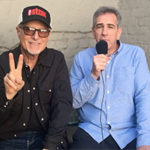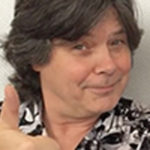Original “Funk Brother” recounts the great sessions at Motown, Philly and Nashville, as well as one or two things that may surprise you!
Exclusive interview with FBPO’s Jon Liebman
December 20, 2010
Bob Babbitt is a bass-playing legend. As one of Motown’s original “Funk Brothers” (recently enshrined on the Hollywood Walk of Fame), Bob has laid down bass tracks for Gladys Knight & the Pips, Edwin Starr, Stevie Wonder, Smokey Robinson, Marvin Gaye, the O’Jays, Teddy Pendergrass and the Spinners. He also worked extensively in the New York, Philly and Nashville studio scenes, having recorded with pop icons Stephanie Mills, Jim Croce, Bonnie Raitt, Bobby Rydell and Engelbert Humperdinck, jazz artists Herbie Mann and Stanley Turrentine, country music stars Louise Mandrell and Carlene Carter and the legendary Frank Sinatra. He has also toured with Joan Baez and Brenda Lee. To date, Bob has played bass on some twenty-five gold records.
FBPO: Tell me about your musical upbringing. Didn’t you start out studying classical bass on the upright?
BB: I did start taking lessons for classical bass after playing in the elementary school orchestra for a couple of years. I studied with a female bass player who was the main bass player at the Pennsylvania College for Woman for two years. After she had graduated, the principle bass player for the Pittsburgh Symphony, Anthony Bianco, became the bass teacher and I studied with him for three years. During that time, I had passed an audition every year. He ultimately awarded me a bass position in the Pittsburgh Symphony Jr., which consisted of the top musicians from all the high schools. Once a year we would do a joint concert with the Symphony. We also did other events throughout the year.
My parents both sang in gypsy bands. The radio and record player at home constantly played the gypsy music. In fact, the first gig I did where I got paid was with a gypsy band. Along with the gypsy and classical music, I also became exposed to black music, which, in those days, was called “Race Music.” I would spend a lot of time listening to this music on the radio and playing along with it. I sat in with a group led by a black sax player in a club when I was 15 or 16 years old and worked a couple of weekends with him.
FBPO: What took you from Pittsburgh to Detroit?
BB: I had been offered a full musical scholarship to the University of Pittsburgh before I graduated from high school, but during my senior year, my father had passed away. I decided not to go to college and instead took a day job to help my Mom at home. In those days, if you did not have some kind of skill, it was hard to find a good paying job unless you worked in a steel mill, which I did not want to do. I had relatives in Detroit and my uncle told me to come to Detroit to check out the job situation. He said I could make three to four times as much money! Greyhound bus to Detroit … my uncle was right!
FBPO: What was it like trying to make it as a bass player in Detroit during the heyday of Motown?
BB: Like most of the bass players I knew, I was playing in nightclubs, bars, dance halls, road bands, some live shows with Motown artists and doing some recording. Like most areas where there is a lot of recording going on, the musicians who play on hit records are the ones the producers and artists want to use on their records. At that time, James Jamerson was Motown’s bass player and his playing was so great that the Motown artists and producers would not use any other bass player.
Along with Motown, there were other Detroit record companies, artists and producers coming from other parts in the country in order to get the Motown sound and the Motown players on their recordings. There were a lot of rock and pop artists and a few jingle companies. I was fortunate to play on some pop hits with Del Shannon and a self-contained group called the Royaltones that led to playing on sessions, not only with other rock/pop artists, but also with the R&B artists. After playing on a couple Top 10 R&B records, I started doing more sessions.







